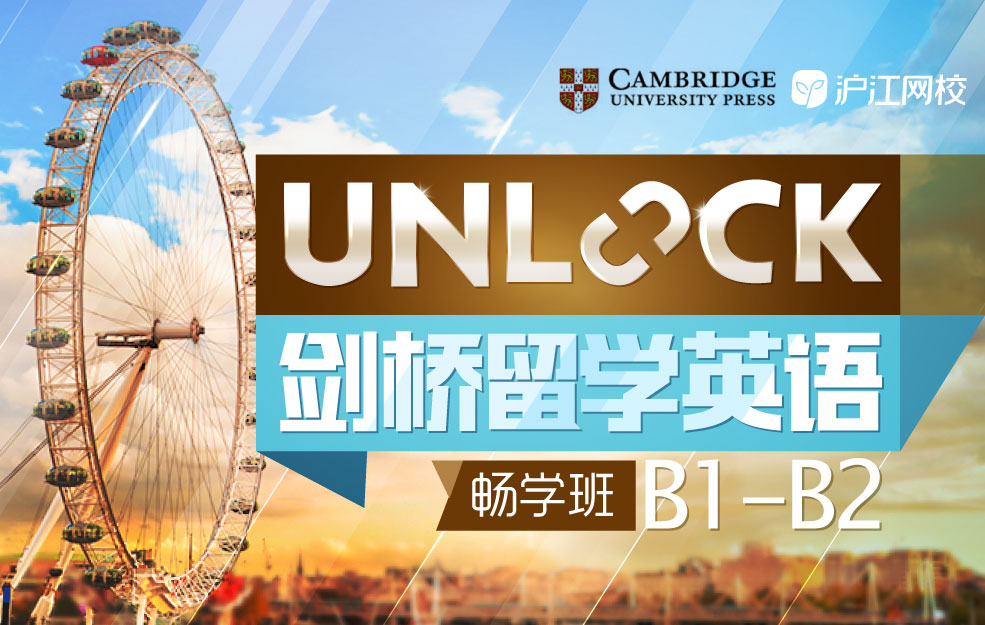小学英语语法总结全集
作者:
2017-09-21 16:55
随着人们对英语的重视程度越来越高,孩子从小就开始学英语。现在的小学英语不仅要学习音标,字母,单词,还要学习简单的语法。下面是沪江小编为大家整理的小学英语语法,希望帮助小学生学习语法,突破语法这一难关。
一、 可数名词与不可数名词的区别
普通名词所表示的人或事物是可以按个数计算的,这类名词叫可数名词。可数名词分为个体名词(表示某类人或事物中的个体,如worker, farmer, desk, factory等)和集体名词(表示作为一个整体来看的一群人或一些事物,如people, family 等)。如果普通名词所表示的事物是不能按个数来计算的,这类名词就叫不可数名词。不可数名词分为物质名词(表示无法分为个体的物质,如meat, rice, water, milk, orange 等)和抽象名词(表示动作、状态、情况、品质等抽象概念,如work, homework, time, health, friendship等)。
二、 可数名词
可数名词有单数和复数两种形式。指一个人或一件事物时,用单数形式;指两个或多个人或事物时用复数形式。名词由单数形式变成复数形式的规则如下:
1. 一般的名词词尾直接加-s 。如:
book → books room → rooms
house → houses day → days
2. 以s, ss, ch, sh, x 结尾的名词,在词尾加-es 。如:
bus → buses glass → glasses
watch → watches
dish → dishes box → boxes
3. 以"辅音字母+y"结尾的名词,要先将y改为i再加-es。如:
city → cities body → bodies
factory → factories等等。
4. 以f 或fe 结尾的名词,要将f或fe改为v再加-es。如:
half → halves leaf → leaves
knife → knives wife → wives
5. 特例 [悄悄话:特例常常考,要记住。]
① child → children
② man → men woman → women
policeman → policemen
(规律:man → men)
③ tomato → tomatoes
potato → potatoes
[悄悄话: 初中英语以o 结尾的名词变复数时只有这两个词加-es,其余的当然加-s喽!如:photo → photos ]
④ foot → feet tooth → teeth
[悄悄话: oo变成ee。]
⑤ sheep, Chinese, Japanese单、复数同形 [悄悄话:变复数时词形不变。]
⑥ people单数形式表示复数意义,要求谓语动词用复数; people的复数形式peoples通常指"多个民族"。
三、 不可数名词
1. 不可数名词没有复数,当它作句子的主语时,谓语动词要用单数形式。如:
The food is very fresh. 食品很新鲜。
2. 有的不可数名词也可以作可数名词,有复数形式,但他们的意义往往发生变化。如:
water (水) → waters (水域)
orange (橘汁) → oranges (橘子)
3. 很多的不可数名词表示泛指时为不可数,表示种类时就可数,但意义大多不发生变化。如:
fruit → fruits food → foods
fish → fishes hair → hairs
用所给名词的适当形式填空。
1. How many________(sheep) are there on the hill?
2. There is some________(food) in the basket.
3. The baby has only two________(tooth) now.
4. There is a lot of________(water) in the bottle.
5. There are five________(people ) in his family.
6. Let's take________(photo), OK?
7. I have lots of________(tomato) here.
8. The________(leaf) on the tree turn-yellow.
9. The________(child) are playing games
on the playground now.
10. Their________(dictionary) look new.
11. I see you have a few white________(hair).
12. They are________(woman) doctors.
13. Can you give me some bottles of ____ (orange), please?
14. There are many________(fox) in the picture.
15. I would like some apple________(juice). I am very thirsty.
参考答案:
1. sheep 2. food 3. teeth 4. water 5. people 6. photos 7. tomatoes 8. leaves 9. children 10. dictionaries 11. hair, hairs 12. women 13. orange 14. foxes 15. juice
名词可数不可数“六注意”
善问大王:Good afternoon, Mr Zhang.名词可数不可数我掌握得不好,请您给我再讲一讲好吗?
Mr Huang:别急!名词可数不可数需要注意六点,下面我就一一给你道来:
一、可数名词是可以用来计数的名词。可数名词有单数和复数形式。如:desk-desks, apple-apples等。不可数名词是不可以直接用来计数的名词。不可数名词没有复数形式,只有单数形式。如:some bread, a little milk等。
二、单数可数名词表示泛指时,前面要用不定冠词a(an),表示特指时,前面要用定冠词the; 而不可数名词前不能用a(an)修饰,表示特指时,前面一定要用定冠词the。如:
He is a factory worker. 他是一名工人。
No one can see air. 没有人能看见空气。
三、可数名词和不可数名词前都可以用some, any, a lot of, lots of 等来修饰,表示"一些,许多"。如:
There are some oranges on the desk. 桌子上有一些桔子。
There is a lot of water in the bottle. 瓶里有许多水。
四、可数名词前可用具体的数词来表示具体的数量。如:two apples, four books等。不可数名词前通常用"单位词+of"来表示数量。如: a piece of paper, three pieces of paper等。
五、可数名词作主语时,谓语动词的单复数与主语的单复数保持一致。如:
This picture is very beautiful. 这幅画很美。
不可数名词作主语时,谓语动词要用单数形式,但是不可数名词前有复数"单位词"时,谓语动词要用复数形式。如:
There are two cups of tea on the table. 桌上有两杯茶。
六、对可数名词前的修饰语提问用how many; 对不可数名词前的修饰语提问用how much。 如:
How many apples are there in the box?盒子里有多少个苹果?
How much tea is there in the cup?杯里有多少茶水?
注意:对不可数名词前的"单位词"的修饰语提问时,疑问词用how many。 如:
How many pieces of bread are there on the plate?盘子里有多少片面包?
善问大王:名词可数不可数有这么多的注意点啊!这下我可全知道了!Thank you very much. Mr Zhang!
Mr Zhang:You're welcome.
“行行色色”的名词所有格
在英语中,特别是表示有生命的名词,可以加's表示所属关系,名词的这种形式我们称之为名词的所有格。
一、名词词尾加's的所有格
1. 一般情况在名词后加's。例如:
That girl's coat is in the room. 那个女孩的衣服在房间里。
2. 在以s结尾的名词(包括以s结尾的复数名词)后面,只加 '。 如果复数名词不是以s结尾的,末尾也要加's。例如:
Today is September 10th, Teachers' Day. 今天是九月十日,教师节。
Children's Day is coming, I should buy something new for my son. 儿童节马上就要到了,我应该为我的儿子买一些新东西。
3. 表示词组内的并列名词各自的所有关系时,须在各个名词后加's;如果一个东西为两个人或者两个以上的人共同拥有,只在最后一个名词后面加's。例如:
They are John's and Kate's rooms. How beautiful they are! 这是约翰和凯特的房间。它们(指房间)太漂亮了!
He is Lily and Lucy's father. 他是莉莉和露西的爸爸。
4. 表示某人的家、店铺等的所有格,一般可以省略它后面所修饰的名词。例如:
My father and I will have dinner at the Johnson's (home ). 我爸爸和我将要去约翰逊的家吃晚饭。
We will have our hair cut at the barber's
(shop) tomorrow afternoon. 明天下午我们要去理发店理发。
5. 有些指时间、距离、国家、城镇等的名词,也可以加's构成所有格。例如:
There is something important in today's newspaper. 今天的报纸上有一些重要的东西。
It's about ten minutes' walk from school to our home every day. 每天从学校到我们家步行大约需要十分钟。
6. 英语名词所有格修饰的词,如果前面已经提到过,后面则可以省略,以防止重复。例如:
This is not Dick's dictionary, but is Tom's. 这不是迪克的字典,但是是汤姆的。
二、由of短语构成的所有格
1. 表示“无生命的名词”一般与of构成短语,表示所有关系。例如:
There is a river on the other side of the road. 在公路的另一边有一条河。
2. 有时我们用名词 + of +名词所有格构成双重所有格的形式。例如:
This is a photo of Mr Brown's. 这是一张布朗先生的照片。
不用定冠词的八项纪律
今天,我们从八个方面来学习一下哪些时候不用定冠词“the”。
一、定冠词不与表示一类人或事物的复数名词连用。例如:
1. I like reading the books.(×) I like reading books.(√)
2. She likes the cats.(×) She likes cats.(√)
二、定冠词不能用在某些习惯用语中的名词前面。例如:
1. I have lunch at the noon.(×) I have lunch at noon.(√)
2. We go to school by the bus.(×) We go to school by bus.(√)
三、定冠词不能用在某些专用名词和不可数名词前面。例如:
1. I like the China.(×) I like China.(√)
2. Would you like a cup of the water? (×)
Would you like a cup of water?(√)
四、定冠词不能用在节日、日期、月份、季节前面。例如:
1. Today is the Teachers’ Day. (×)
Today is Teachers’ Day.(√)
2. He was born in the May in 1987. (×)
He was born in May in 1987. (√)
五、定冠词不能用在表示称呼语或某些头衔的名词前面(尤其作表语、宾补时)。例如:
1. Good morning, the sir!(×)
Good morning, sir! (√)
2. I need some help, the Mummy.(×)
I need some help, Mummy.(√)
六、定冠词不能与名词前已有作定语用的this, that, my, your, some, any等代词连用。例如:
1. This the pen is mine. (×)
This pen is mine.(√)
2. I have the some money. (×)
I have some money. (√)
七、定冠词不能用在表示科目名词的前面。例如:
1. We will learn the Chinese, the history and the Maths this afternoon. (×)
We will learn Chinese, history and Maths this afternoon.(√)
2. The English is the most interesting of all the subjects.(×)
English is the most interesting of all the subjects.(√)
八、定冠词不能用在三餐和球类运动名词的前面。例如:
1. She goes to school after the breakfast every morning.(×)
She goes to school after breakfast every morning.(√)
2. We often play the football after school. (×)
We often play football after school. (√)
中国学生学习语法真是一大考验,学语法要结合具体语境才能收到良好的效果,而中国小学生在学习英语时,只是自己一个人埋头苦学,不喜欢与别人交流,如此的学法,如何能提高呢?沪江小编还是建议同学们应当多交流,把语法的学习融入到生活中。


